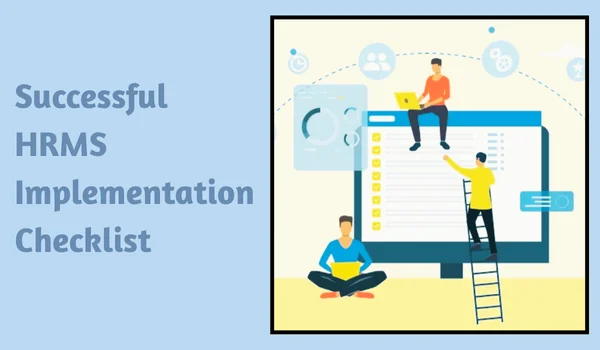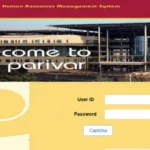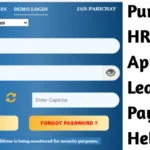Implementing an HRMS (Human Resource Management System) in 2025 can be a game-changer for your organization. Whether you’re a startup aiming to automate payroll or an enterprise seeking full-scale HR digitization, a successful HRMS implementation requires meticulous planning, coordination, and execution.
To help you ensure a smooth and effective rollout, here is a complete checklist for successful HRMS implementation in 2025 — tailored to modern HR needs, cloud-based systems, and the latest in biometric, compliance, and AI integrations.
✅ 1. Define Your Objectives and Scope

Before diving into implementation, get clarity on what problems you’re solving and what you expect from the HRMS.
- Identify pain points (e.g., payroll errors, manual attendance, lack of reports)
- Set clear goals (e.g., automate payroll, improve compliance, enable ESS)
- Decide on modules required: Payroll, Attendance, Performance, Recruitment, etc.
- Determine user groups: HR, managers, employees, finance, IT
✅ 2. Select the Right HRMS Vendor
Your choice of vendor will determine implementation success.
- Evaluate vendors based on features, pricing, scalability, and support
- Ensure Indian statutory compliance (PF, ESI, TDS, etc.)
- Check for integration with biometric devices, accounting tools, ERPs
- Request demos and trials from shortlisted vendors
- Review customer testimonials and industry fit
✅ 3. Build a Cross-Functional Implementation Team
HRMS implementation is not an HR-only project — it needs cross-department support.
- Appoint a project manager (can be from HR or IT)
- Include stakeholders from HR, Finance, IT, and department heads
- Assign responsibilities: data migration, training, testing, configuration
✅ 4. Prepare and Clean HR Data
Clean data is the foundation of a reliable HRMS.
- Collect current employee information (personal, salary, UAN, PAN, etc.)
- Consolidate leave balances, attendance logs, and payroll history
- Verify document accuracy and format according to vendor template
- Remove duplicate, outdated, or incorrect records
✅ 5. Configure the HRMS
Tailor the HRMS based on your company’s structure and HR policies.
- Set up organizational hierarchy and departments
- Define work shifts, holidays, and weekly offs
- Configure leave types and approval workflows
- Build salary structures, components, deductions, and compliance rules
- Assign user roles, access rights, and reporting permissions
✅ 6. Integrate With Third-Party Systems
Ensure seamless operation by integrating your HRMS with essential tools.
- Connect biometric attendance or GPS tracking devices
- Integrate with accounting software for payroll disbursement
- Set up API connections for ERP or CRM (if applicable)
- Enable email and cloud document storage integrations
✅ 7. Train All Stakeholders
User adoption depends on effective training and communication.
- Conduct detailed training for HR and payroll teams
- Offer quick-start guides and tutorials for managers and employees
- Promote the use of the Employee Self-Service (ESS) portal and mobile app
- Assign internal champions to support end users during rollout
✅ 8. Perform End-to-End Testing
Testing avoids major problems after going live.
- Test payroll runs with dummy data
- Simulate leave applications, attendance logs, and expense claims
- Verify report accuracy, compliance filings, and user access
- Collect feedback from test users and refine settings
✅ 9. Go Live Strategically
Choose a go-live date that minimizes disruption and allows support availability.
- Announce the go-live date in advance to all users
- Launch in phases (e.g., start with payroll and attendance first)
- Monitor system performance closely during the first few weeks
- Address support tickets and queries in real-time
✅ 10. Post-Implementation Review & Optimization
The real value of HRMS comes from continuous improvement.
- Schedule a review after 30/60/90 days to assess performance
- Optimize configurations based on real usage and feedback
- Enable additional modules like performance or recruitment as needed
- Stay updated with vendor upgrades and features
📌 Final Thoughts
A successful HRMS implementation in 2025 hinges on clear planning, team collaboration, structured data, robust testing, and strong vendor support. Use this checklist to avoid common pitfalls and ensure that your organization reaps the full benefits of digital HR transformation.
With the right approach, your HRMS will not just manage your workforce — it will empower them.

Hi, I am Kapil Kumar, founder and chief editor of indiasvibes.com, a platform delivering the latest updates on business, finance, entertainment, and sports. With a passion for insightful storytelling, I am and my team ensures our readers receive accurate and engaging content.

